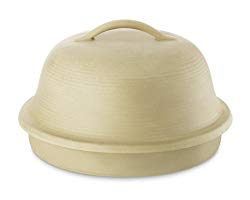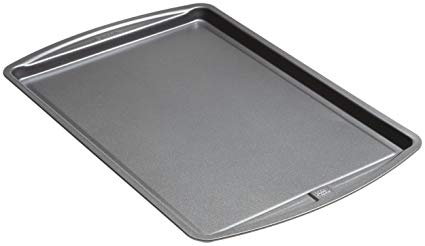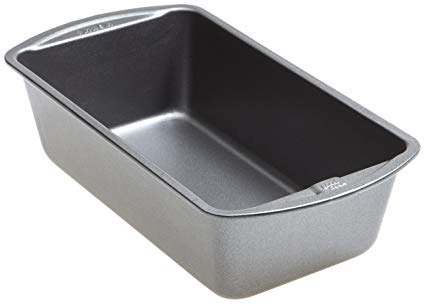So your dough is rising, and you’re almost ready to put it in the oven. But OH NO! You don’t know how what to bake it in or on! Or how to get it in there! Fear not.
Baking Vessels

Cast Iron
Cast iron is my preferred baking material. It gets super hot and holds the heat really well, which allows for instant caramelization of the crust, which prevents sticking. It also traps moisture from the dough right up against the bread, which helps to develop a good crust. On the downside, it’s heavy, hard to clean, and can burn you super easily.

Ceramic
Ceramic does basically the same job as cast iron in terms of holding heat and trapping moisture. It’s a little easier to clean, but it’s fragile.

Baking Sheet
These are near the bottom of the list because it can’t trap moisture, and it doesn’t hold heat well enough to prevent sticking. The major upside is that it can fit more stuff on it, and larger loaves, and it’s almost definitely in your kitchen already. Your bread will still turn out great, it just won’t have quite as strong a crust.
*If you’re making rolls, bagels, pretzels, etc., a baking sheet is fine. The above blurbs are more aimed at loaves.*

Loaf Pan
These are great for very specific circumstances (i.e., making a loaf-shaped loaf), but I usually prefer freeform shapes like a boule, so I don’t use it that often
Rising/Preheating
You’ll want to start the preheating process while your dough is completing its final rise.
If you’re using a baking sheet or loaf pan, preheating is as simple as turning the oven on to your desired temperature and waiting. Let your dough do its final rise on the sheet or pan, then once your dough is done rising, just put it into the oven and call it a day.
If you’re using cast iron or ceramic, you’ve got a bit more to consider. First off, you should do your final rise in a proofing basket or a bowl. These just serve to hold your dough and help it keep its shape while it rises. Heavily flour the proofing basket or grease the bowl, and drop your dough in there, then put some more flour on top of the dough. This will hopefully keep your dough from sticking when you try to get it out.
Next, you’ll want to preheat with the baking vessel in the oven already, and you’ll want to start preheating even earlier so that the baking vessel really gets saturated with heat. I usually start preheating at the same time I start my final rise, sometimes letting the preheat go for 45-60 minutes.
Once it’s time to bake, carefully flip your bowl or basket over so the dough falls onto a floured, waiting hand, then drop it into your preheated baking vessel. Put the lid on and close up the oven. You’ll probably want to take the lid off after about 15 minutes.
If you only have one baking vessel but are making 2 loaves, fear not! 20 minutes before baking, during your final rise, put one of the loaves into the fridge. Then, bake the un-refrigerated loaf. Once it’s out of your vessel, pull the dough out of the fridge and reheat the vessel for 5 minutes. Drop your second dough in there and you’re good to go. It takes longer because you’re baking sequentially, but it’s the best option.
0 Comments